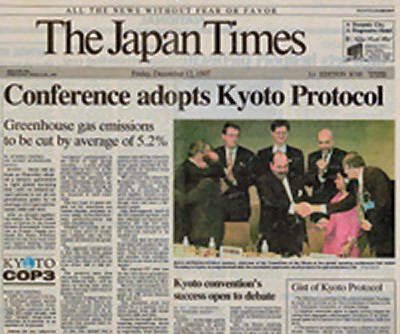Bernard Madoff is arrested and charged with fraud in a $50 billion Ponzi scheme.

The Madoff investment scandal was a major case of stock and securities fraud discovered in late 2008. In December of that year, Bernard Madoff, the former NASDAQ Chairman and founder of the Wall Street firm Bernard L. Madoff Investment Securities LLC, admitted that the wealth management arm of his business was an elaborate Ponzi scheme.
Madoff founded the Wall Street firm Bernard L. Madoff Investment Securities LLC in 1960, and was its chairman until his arrest. The firm employed Madoff’s brother Peter as senior managing director and chief compliance officer, Peter’s daughter Shana Madoff as rules and compliance officer and attorney, and Madoff’s sons Andrew and Mark. Peter has since been sentenced to 10 years in prison, and Mark committed suicide by hanging exactly two years after his father’s arrest.
Alerted by his sons, federal authorities arrested Madoff on December 11, 2008. On March 12, 2009, Madoff pleaded guilty to 11 federal crimes and admitted to operating the largest private Ponzi scheme in history. On June 29, 2009, he was sentenced to 150 years in prison with restitution of $170 billion. According to the original federal charges, Madoff said that his firm had “liabilities of approximately US$50 billion”. Prosecutors estimated the size of the fraud to be $64.8 billion, based on the amounts in the accounts of Madoff’s 4,800 clients as of November 30, 2008. Ignoring opportunity costs and taxes paid on fictitious profits, half of Madoff’s direct investors lost no money, with Madoff’s repeated whistleblower, Harry Markopolos, estimating that at least $35 billion of the money Madoff claimed to have stolen never really existed, but was simply fictional profits he reported to his clients.
Investigators have determined others were involved in the scheme. The U.S. Securities and Exchange Commission has also been criticized for not investigating Madoff more thoroughly. Questions about his firm had been raised as early as 1999. Madoff’s business was one of the top market makers on Wall Street and in 2008 was the sixth-largest.
Madoff’s personal and business asset freeze created a chain reaction throughout the world’s business and philanthropic community, forcing many organizations to at least temporarily close, including the Robert I. Lappin Charitable Foundation, the Picower Foundation, and the JEHT Foundation.
Madoff started his firm in 1960 as a penny stock trader with $5,000, earned from working as a lifeguard and sprinkler installer. His fledgling business began to grow with the assistance of his father-in-law, accountant Saul Alpern, who referred a circle of friends and their families. Initially, the firm made markets via the National Quotation Bureau’s Pink Sheets. To compete with firms that were members of the New York Stock Exchange trading on the stock exchange’s floor, his firm began using innovative computer information technology to disseminate quotes. After a trial run, the technology that the firm helped develop became the NASDAQ. At one point, Madoff Securities was the largest buying-and-selling “market maker” at the NASDAQ.
He was active in the National Association of Securities Dealers, a self-regulatory securities industry organization, serving as the chairman of the board of directors and on the board of governors.
In 1992, The Wall Street Journal described him:
… one of the masters of the off-exchange “third market” and the bane of the New York Stock Exchange. He has built a highly profitable securities firm, Bernard L. Madoff Investment Securities, which siphons a huge volume of stock trades away from the Big Board. The $740 million average daily volume of trades executed electronically by the Madoff firm off the exchange equals 9% of the New York exchange’s. Mr. Madoff’s firm can execute trades so quickly and cheaply that it actually pays other brokerage firms a penny a share to execute their customers’ orders, profiting from the spread between bid and asked prices that most stocks trade for.
—?Randall Smith, Wall Street Journal
Several family members worked for him. His younger brother, Peter, was senior managing director and chief compliance officer, and Peter’s daughter, Shana Madoff, was the compliance attorney. Madoff’s sons, Mark and Andrew, worked in the trading section, along with Charles Weiner, Madoff’s nephew. Andrew Madoff had invested his own money in his father’s fund, but Mark stopped in about 2001.
Federal investigators believe the fraud in the investment management division and advisory division may have begun in the 1970s. However, Madoff himself stated his fraudulent activities began in the 1990s.
In the 1980s, Madoff’s market-maker division traded up to 5% of the total volume made on the New York Stock Exchange. Madoff was “the first prominent practitioner” of payment for order flow, paying brokers to execute their clients’ orders through his brokerage, a practice some have called a “legal kickback”. This practice gave Madoff the distinction of being the largest dealer in NYSE-listed stocks in the U.S., trading about 15% of transaction volume. Academics have questioned the ethics of these payments. Madoff has argued that these payments did not alter the price that the customer received. He viewed payments for order flow as a normal business practice: “If your girlfriend goes to buy stockings at a supermarket, the racks that display those stockings are usually paid for by the company that manufactured the stockings. Order flow is an issue that attracted a lot of attention but is grossly overrated.”
By 2000, Madoff Securities, one of the top traders of US securities, held approximately $300 million in assets. The business occupied three floors of the Lipstick Building, with the investment management division, referred to as the “hedge fund”, employing a staff of approximately 24. Madoff ran a branch office in London that employed 28 people, separate from Madoff Securities. The company handled investments for his family of approximately £80 million. Two remote cameras installed in the London office permitted Madoff to monitor events from New York.



